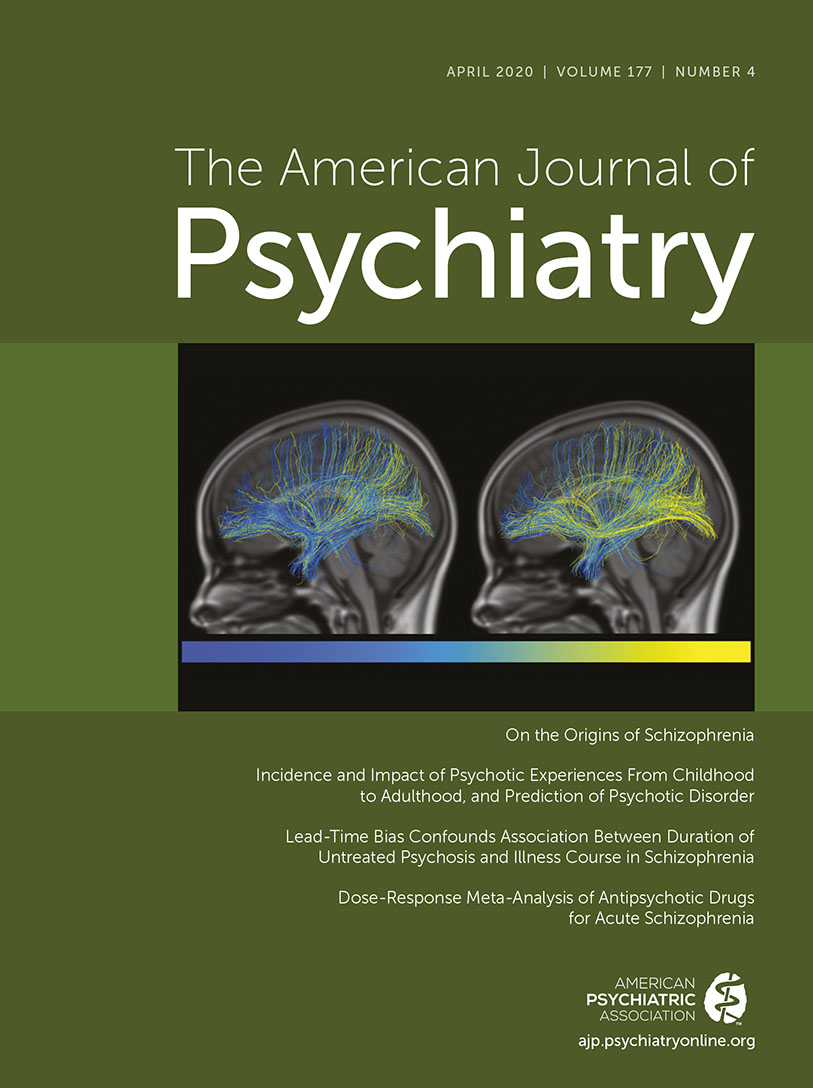A Population-Based Cohort Study Examining the Incidence and Impact of Psychotic Experiences From Childhood to Adulthood, and Prediction of Psychotic Disorder
Abstract
Objective:
The authors investigated the incidence, course, and outcome of psychotic experiences from childhood through early adulthood in the general population and examined prediction of psychotic disorder.
Methods:
This was a population-based cohort study using the semistructured Psychosis-Like Symptoms Interview at ages 12, 18, and 24 (N=7,900 with any data). Incidence rates were estimated using flexible parametric modeling, and positive predictive values (PPVs), sensitivity, specificity, and area under the curve were estimated for prediction.
Results:
The incidence rate of psychotic experiences increased between ages 13 and 24, peaking during late adolescence. Of 3,866 participants interviewed at age 24, 313 (8.1%, 95% CI=7.2, 9.0) had a definite psychotic experience since age 12. A total of 109 individuals (2.8%) met criteria for a psychotic disorder up to age 24, of whom 70% had sought professional help. Prediction of current psychotic disorder at age 24 (N=47, 1.2%), by both self-report and interviewer-rated measures of psychotic experiences at age 18 (PPVs, 2.9% and 10.0%, respectively), was improved by incorporating information on frequency and distress (PPVs, 13.3% and 20.0%, respectively), although sensitivities were low. The PPV of an at-risk mental state at age 18 predicting incident disorder at ages 18–24 was 21.1% (95% CI=6.1, 45.6) (sensitivity, 14.3%, 95% CI=4.0, 32.7).
Conclusions:
The study results show a peak in incidence of psychotic experiences during late adolescence as well as an unmet need for care in young people with psychotic disorders. Because of the low sensitivity, targeting individuals in non-help-seeking samples based only on more severe symptom cutoff thresholds will likely have little impact on population levels of first-episode psychosis.




